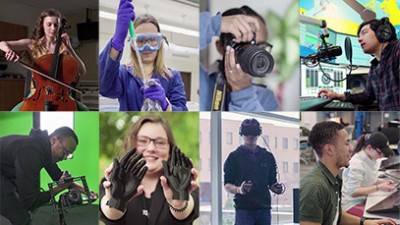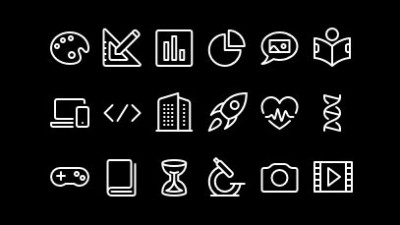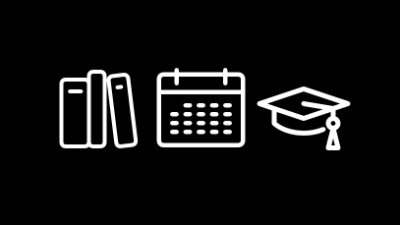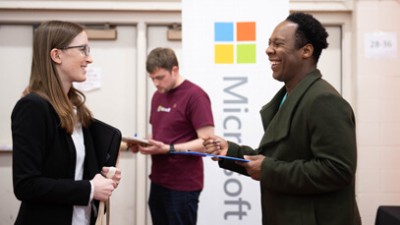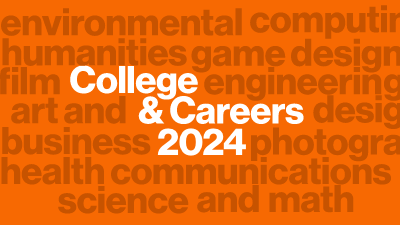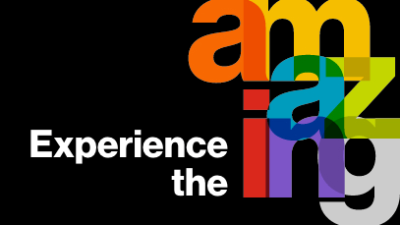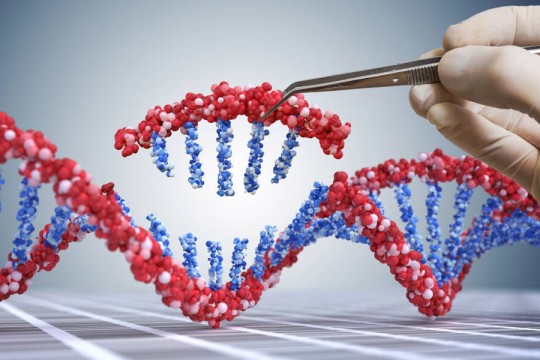News Stories
Breadcrumb
- RIT/
- University News
-
February 2, 2024
![college student runs a vintage printing press, making a poster that says thinkers, makers, printers in gold ink.]()
Maker community fills the new SHED
RIT’s makerspace capacity has grown exponentially from a crowded room on the fourth floor in an engineering building to three floors in the centrally located SHED. New last fall, the SHED complex showcases different kinds of making and learning under one roof—in workshops, performing arts spaces, and extra-large classrooms designed for active learning.
-
February 2, 2024
![the aging text of Nicolaus Copernicus' De Revolutionibus Orbium Coelestium is shown open to middle pages.]()
Centuries-old astronomy texts find new home at RIT
WHAM-TV features the donation of texts by early astronomers Copernicus and Sacrobosco to RIT's Cary Graphic Arts Collection.
-
February 1, 2024
![a computer generated image of a DNA strand colored in red and blue and a gloved hand with a pair of tweezers pulling a piece of the strand out.]()
Researcher proposes DNA-based computing platform
Blocks and Files talks to Amlan Ganguly, department head, Department of Computer Engineering, about his research on DNA-based computing platforms.
-
February 1, 2024
![Chris Wairegi appears on screen in an orange and white sweater.]()
Meet the woman creating community for Black women in film
Good Morning America speaks to Chris Wairegi '14 (film and animation and advertising photography), founder of the organization 600 Black Women, about how the nonprofit focuses on uplifting black women in the film community.
-
February 1, 2024
![John Sohrawardi appears on WROC-TV with a chyron displaying his name]()
RIT working on ‘De-Fake’ project to detect what’s real on the internet
WROC-TV talks to John Sohrawardi, a cybersecurity Ph.D. student, about the dangers of deepfake imagery.
-
January 31, 2024
![a student in a green shirt sketching on a large pad of paper that is sitting on an easel.]()
RIT’s School of Film and Animation ranked No. 16 nationally
RIT’s School of Film and Animation (SOFA) has been ranked among the top 50 animation schools in the country by Animation Career Review, a leading online resource of information for aspiring animation and game design professionals.
-
January 30, 2024
![a close up photo of Ruha Benjamin speaking on a stage.]()
We can get more imaginative about what we imagine
Essay written by Evan Selinger, professor of philosophy, published by The Boston Globe.
-
January 30, 2024
![3 people appear on a panel on television]()
Artificial intelligence becomes part of daily life
South Korean-based Arirang TV interviews Ashique KhudaBukhsh, assistant professor of software engineering, about the adoption of artificial intelligence in our daily lives and its broader implications.
-
January 30, 2024
![a microfluidic device used for data storage on DNA is sitting on a blue glove covered hand.]()
Researcher bridges biology and computing with processing in DNA storage
An engineering researcher at RIT has discovered the means to process data using DNA. Amlan Ganguly, computer engineering department head in RIT’s Kate Gleason College of Engineering, and researchers at the University of Minnesota, designed a microfluidic integrated circuit to perform complex operations through artificial neural network computations on data stored in DNA.
-
January 30, 2024
![a view of one of the hallways in the shed with floor to ceiling windows and students sitting at tables or in lounge seating.]()
A place for creativity, collaboration, and discovery
The Rochester Beacon talks to Tiffany Brodner, executive director, Student Hall for Exploration and Development, about the new Student Hall for Exploration and Development (SHED) and its impact as the campus' creative hub.
-
January 29, 2024
![Joe Biden appears at a press conference.]()
The AI trust deficit
Politico talks to Matthew Wright, department chair, Department of Cybersecurity, about AI voice cloning technology and its impact on the upcoming election.
-
January 29, 2024
![pages of a centuries old text penned by early astronomers Copernicus and Sacrobosco.]()
Centuries-old texts penned by early astronomers Copernicus and Sacrobosco find new home at RIT
The ancient astronomer Nicolaus Copernicus was the first scientist to document the theory that the sun is the center of the universe in his book, De Revolutionibus Orbium Coelestium (On the Revolutions of the Heavenly Spheres). That first edition book, along with a delicate manuscript from astronomer Johannes de Sacrobosco, that is contrary to Copernicus’ groundbreaking theory, has now found a permanent home at Rochester Institute of Technology.

